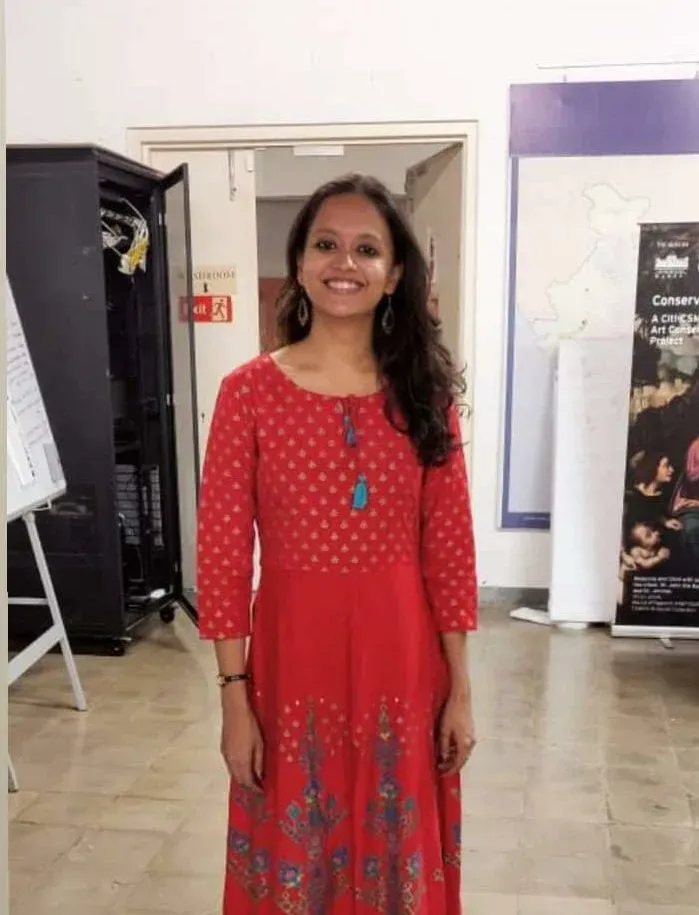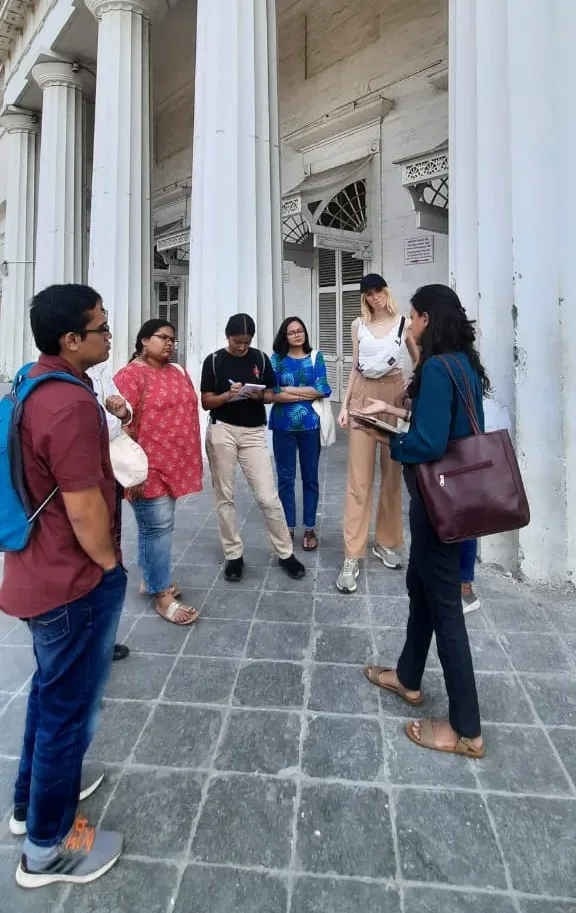Welcome to our exclusive interview series, Young Professionals in Heritage, where we delve into the vibrant world of young heritage professionals. This series shines a spotlight on the dynamic individuals who are shaping the future of the heritage sector.
Our guest this week is Apoorva Iyergar. Apoorva is a conservation architect and is a part of the foundation, FORT, that looks after the UNESCO World Heritage Sites in Mumbai. She is an influential heritage advocate and teaches at Kamla Raheja Vidyanidhi Institute for Architecture and Environmental Studies.
Nature and Culture go hand in hand, and equal importance, if not more, needs to be given to natural sites of our country.

Let’s start with simple questions – What does a conservation architect do? Is there more awareness about the conservation of built heritage in big cities than in other smaller towns or is it the other way around?
There are various aspects to a conservation architect’s profession, but the primary goal is to protect and conserve our cultural heritage. A conservation architect’s work contributes to prolonging the life of our cultural heritage, and to slow the rate of change that any place experiences. A conservation architect researches, assesses and gives recommendations, plans or strategies to protect or enhance heritage. Advocacy, outreach and raising awareness of heritage aspects are equally important to the profession. Conserving cultural heritage is a collaborative process, and conservation architects have to work with structural engineers, archaeologists, historians, conservation scientists, anthropologists, architects, designers, policymakers, urban planners etc. As such, a conservation architect is required to understand the layers of the past, the challenges of the present, and the needs of the future.
It can be considered that bigger cities have had more means and resources to deal with the protection and conservation of their built heritage. Cities like Mumbai and Delhi have been in the forefront of establishing and implementing some sound guidelines for heritage properties.
However, there are many other cities like Pondicherry, Kochi, and Bengaluru that are on the same path and have some stellar examples of heritage conservation work done. Even organisations and individuals outside the government fold are deeply interested in protecting their local heritage. Heritage walks are now popular and also tied to the tourism industry in many cities all over the country. Raising awareness is the first step to sensitising people about our heritage, such that it continues to hold value for the present and future generations.
You actively take part in heritage advocacy and create awareness about heritage precincts. Today, we are experiencing severe effects of climate change globally and India is feeling the effects more than most countries. Climate Change is also causing more and more heritage sites and monuments to be at risk of damage or being lost. Do you think it is time we needed a comprehensive policy for heritage management with regard to climate change?
Climate change is prominent and we are seeing its impact on an almost daily basis. There are various studies that are beginning to take ground in order to understand the impact that climate change has on our heritage. In our country, with its diverse topography and landscape, each heritage site probably deals with its own unique challenges when it comes to the impact of climate change – be it whether the risk of flooding, storms, cyclones, to increased rate of deterioration, patina alteration, visitor mismanagement etc. The implementation of these strategies, however, might take longer in order for us to see the full results. However, these climate change mitigation policies need to be compiled at the local, national and international levels. These should be a part of the local area plans, the city or town planning regulations, and not just our national planning policies.
The other way around, the protection of our cultural heritage invariably leads to establishing protection strategies for our vulnerable natural areas. Heritage sites are never isolated, but always tied to their surroundings. A holistic approach that combines the natural and the built heritage becomes an effective tool for addressing climate change.
Historic cities like Mumbai and Bangalore are losing their green cover at unprecedented speed. Do you think as a heritage advocate there is a need to create awareness about cities’ natural heritage too?
Absolutely. Nature and Culture go hand in hand, and equal importance, if not more, needs to be given to natural sites of our country. Natural elements and spaces are what make our cities and towns liveable. Other than local forest and natural sciences departments, organisations like the IUCN, and the Wildlife Institute of India are constantly researching and trying to protect our natural heritage. Nature walks in cities have become popular over the recent years, indicating that people are increasingly concerned and interested in our natural heritage.
You have engaged with people at the grassroots level. Can you tell us if public participation played a major role in transforming heritage or cultural precincts? Do you think public participation is necessary for such transformation projects?
Public participation is the backbone of the protection of our cultural heritage. Any site or precinct cannot function without the support and acknowledgement of the communities living, visiting or using the site in some form. The way people respect and take care of a site can transform the way in which the site is perceived. However, there are also some cons to this, especially when people are not aware of or are insensitive to the nature of a cultural or natural site. Hence, spreading awareness through sustained sensitive interpretation can go a long way in protecting a site.

You are a part of the team that looks at the UNESCO World Heritage Site – Victorian Gothic and Art Deco Ensembles of Mumbai. What were some of the challenges that one faces in such a site after it is inscribed? Will we see more such UNESCO listings in Mumbai in future?
Situated in the prime area of the Island City, the Ensemble covers an expanse of 66.34 hectares, with a larger buffer zone of 378.78 hectares. The use of these buildings varies, ranging from government institutions, private residences, educational institutions, and a range of public open spaces. Thousands of people navigate the World Heritage area, using different modes of transportation. In such a ‘living heritage’ site, the overall historic integrity of the site is continually under pressure. A complex ownership pattern for many buildings has also resulted in a lack of incentives for owners for sensitive restoration. However, there is a growing awareness of the importance of the site that has been seen in the last few years. Many properties within the Ensemble have been or are being conserved successfully – like the CSMVS Museum, Eros Cinema, David Sassoon Library and Reading Room, Esplanade Mansion, Swastik Court, Court View, Empress Court, etc. These measures have uplifted the importance and continued protection that these sites receive within the Ensembles.
Mumbai has a rich history and already has 3 UNESCO World Heritage sites to its credit. It definitely has the potential for more World Heritage Inscriptions. However, primarily, one should aim to increase the importance of local area listings in more effective ways.
